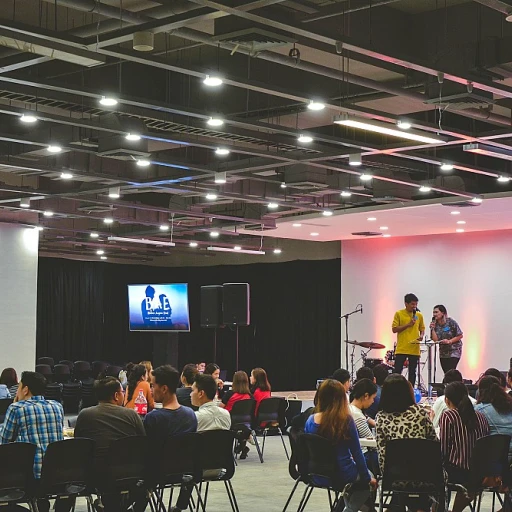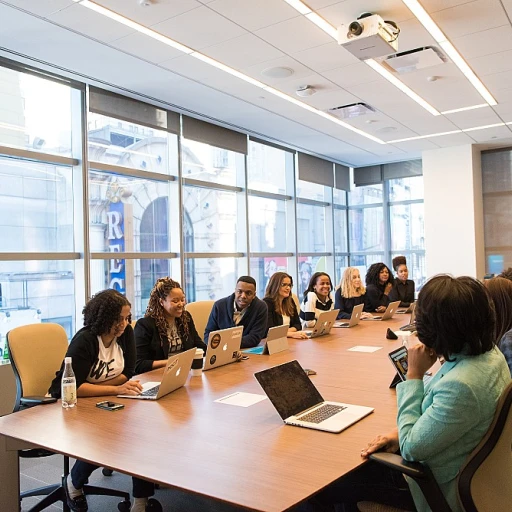
Overview of Illinois Work Break Laws
Breaking Down Illinois' Work Break Requirements
Illinois labor laws establish specific requirements regarding meal and rest breaks that employers must provide to their employees. Understanding these break laws is crucial for ensuring compliance and maintaining a productive work environment.
Under Illinois law, employers are required to offer meal breaks for employees working over a certain number of consecutive hours. Specifically, if an employee is scheduled to work for a period exceeding 7.5 hours, a 20-minute meal break must be provided. This break should be offered no later than the 5th hour of work. While the meal break is often unpaid, it gives employees the essential time needed to rest and refresh.
There aren't specific Illinois state mandates for rest breaks, yet many employers choose to offer them as part of cultivating a positive work environment. These breaks usually last just a few minutes and provide employees with brief intervals to regain their energy, ensuring better focus and productivity during working hours.
On a federal level, breaks are generally not required by law, allowing each state, like Illinois, to set more stringent standards to protect the welfare of the labor force. It's essential for employers in Illinois to remain updated with the latest labor laws to meet legal obligations.
For employees, understanding these break requirements is key to recognizing their rights in the workplace. Employers, on the other hand, benefit from fostering an environment of compliance and trust by adhering to these regulations, establishing clear communication of work break policies within the company.
The Importance of Effective Communication in HR
Crafting Clear Messages for Improved Understanding
Effective communication is paramount in human resources, especially when navigating the intricate landscape of work break laws. When it comes to Illinois work break regulations, it's essential for HR professionals to be transparent and precise. Employers must articulate break requirements accurately to employees, ensuring they understand their entitlements and any obligations related to meal and rest breaks.Breaks are crucial for maintaining employee well-being and productivity, yet misconceptions around break laws and their application can lead to dissatisfaction and mistrust. It is the responsibility of employers to convey the specific parameters of break times, such as the duration of each break and whether it is paid or unpaid. Furthermore, employees should be informed if these regulations differ from federal law or other labor laws.
Addressing the Challenges of Communication
While outlining the legal aspects of work breaks, HR must also navigate the challenges that arise in communication. Employees may have diverse interpretations of break periods, such as the required meal or rest break, when they occur within work hours, and if consecutive hours are necessary before a break.To address these challenges, HR teams should create clear and comprehensive policies that define break periods in layman's terms. Employees working different shifts or hours need access to information that is both easy to understand and consistent with Illinois labor laws. Providing scenarios or examples can aid comprehension, especially for breaks lasting various minutes or exceeding standard time limits.
This clarity not only aids in compliance but also fosters a trusting environment where employees feel their needs and rights are respected. For further insights into enhancing HR communication practices in light of new initiatives, you might find the trusted workforce transformation useful: The Trusted Workforce 2.0 Initiative.
Challenges in Communicating Work Break Policies
Overcoming Communication Barriers for Work Break Policies
Effective communication of work break policies is crucial for both employers and employees in Illinois. However, various challenges can arise, hindering the understanding and implementation of these break laws. It is important for companies to recognize these potential obstacles and address them proactively. Firstly, the complexity of the law itself can create confusion. Break requirements must conform to both state and federal law, with specifics around unpaid, minute meal breaks, and consecutive hours. Therefore, employees working across different shifts may face uncertainty about their entitlements. Secondly, employees don’t always receive uniform information. Distinct departments may communicate differently, leading to inconsistencies in understanding. Employers are required to ensure that all employees receive clear, concise, and consistent information about their entitlement to meal periods and rest breaks. For instance, one common barrier is language diversity within the workforce. Employers must foster an inclusive environment by providing multilingual communication. This step is vital to ensuring all workers, regardless of their primary language, comprehensively understand their rights and the company’s labor policies. Another challenge is clarifying what constitutes a "break" versus a "rest period" or "meal break," especially as breaks can vary from a few minutes to longer durations. Providing practical scenarios and defining terms can help employees discern when meal periods are required or when rest breaks are expected. To address these challenges effectively, modern HR teams increasingly rely on innovative strategies. Leveraging technology, such as engaging video concepts to enhance team communication, is one such strategy that can simplify the understanding of labor laws and entitlements related to breaks. Employers need to develop cohesive channels of communication that actively involve HR departments. By anticipating these challenges and openly addressing them, employers can foster a work environment that is both compliant with break laws and conducive to employee satisfaction.Best Practices for HR Communication
Communicating Work Break Policies Clearly
Effective human resources communication is paramount when it comes to conveying work break policies, especially in the context of Illinois' specific labor laws. Here are some best practices to ensure that your communication strategy is both comprehensive and clear:- Simplify Complex Legal Jargon: Break down Illinois labor laws concerning work breaks into easy-to-understand language. Terms like 'employers required' to provide a '30-minute meal break' after '5 consecutive hours' of work should be clearly explained.
- Use Multiple Channels: To ensure that all employees are informed, utilize various communication channels such as email newsletters, intranet pages, and physical bulletin boards in break rooms. This multi-channel approach accounts for employees who may not have regular access to digital communication.
- Provide Examples and Scenarios: Illustrate how break laws apply with real-world scenarios. For instance, explain that while Illinois laws require a meal period, federal law does not mandate paid breaks during work hours.
- Regular Updates and Reminders: Laws and company policies often change. Regularly update employees on any changes in break laws or company policies to ensure compliance and understanding. For example, remind employees working long hours about their entitled minute meal and rest periods through periodic updates.
- Feedback Mechanism: Establish a system where employees can ask questions or provide feedback about work break policies. This could involve a suggestion box, an open-door policy with HR, or digital platforms that facilitate discussion.
Leveraging Technology for HR Communication
Utilizing Modern Tools for Efficient HR Communication
In the realm of human resources, communicating work break policies effectively can often be a daunting task for both employers and employees. Leveraging technology, however, can play a critical role in overcoming these communication challenges. Here's how HR professionals can utilize technology to streamline communication regarding Illinois work break laws and policies.- Adopting HR Software Platforms: Many modern platforms ensure easy distribution and access to HR policies related to break requirements, meal breaks, and rest periods. These systems can send automatic notifications about updates regarding break laws, ensuring that both employers and employees are aware and compliant.
- Mobile Applications: With a workforce that’s increasingly mobile, ensuring that employees can access HR policies on their smartphones or tablets is vital. Apps that notify employees about their entitled minute breaks, unpaid or paid, or other break requirements enhance awareness and compliance.
- Digital Communication Channels: From email alerts to instant messaging platforms, these can efficiently relay information about federal law compliance, required meal breaks, or adjustments in workplace policies for consecutive work hours. It's crucial for employers to regularly update these channels with new information for employees working long hours.
- Online Training Programs: Interactive modules can educate employees on their rights regarding work breaks, including minute meal requirements, breaks lasting specific minutes, and rest periods mandated by labor laws. This proactive approach empowers employees while fostering a culture of transparency.
Case Studies: Successful HR Communication Strategies
Illustrations of Successful Strategies in HR Communication
Examining successful case studies of Human Resources (HR) communication strategies can offer insights into the practical application of effective communication. By understanding these success stories, HR professionals can identify key elements that can be incorporated into their own communication practices. One notable case involved a large manufacturer in Illinois that faced challenges in aligning their work break policies with both state and federal law. They aimed to ensure that all employees understood their entitlements, such as the required meal and rest breaks. Here's what they did:- Clear articulation of the law: They developed easy-to-read documentation that clearly outlined the specifics of Illinois break laws, detailing the difference between paid and unpaid breaks, and how this aligned with federal labor standards. Employees were reminded of their rights to meal breaks lasting at least 30 minutes if their work hours extended beyond certain required periods.
- Interactive training sessions: The employer organized interactive sessions to discuss break requirements, ensuring that employees could ask questions and clarify doubts. These sessions emphasized the importance of taking unpaid and paid breaks to boost productivity and satisfaction.
- Regular communication through multiple channels: This manufacturer leveraged technology by using emails, internal newsletters, and mobile applications to remind employees of their break entitlements and the impacts of consecutive hours worked without rest.
- Feedback mechanism: Implementing a simple but effective feedback system allowed employees to share their experiences or any misunderstandings about break laws or other work policies. This enabled the HR team to refine their communication techniques continually.












